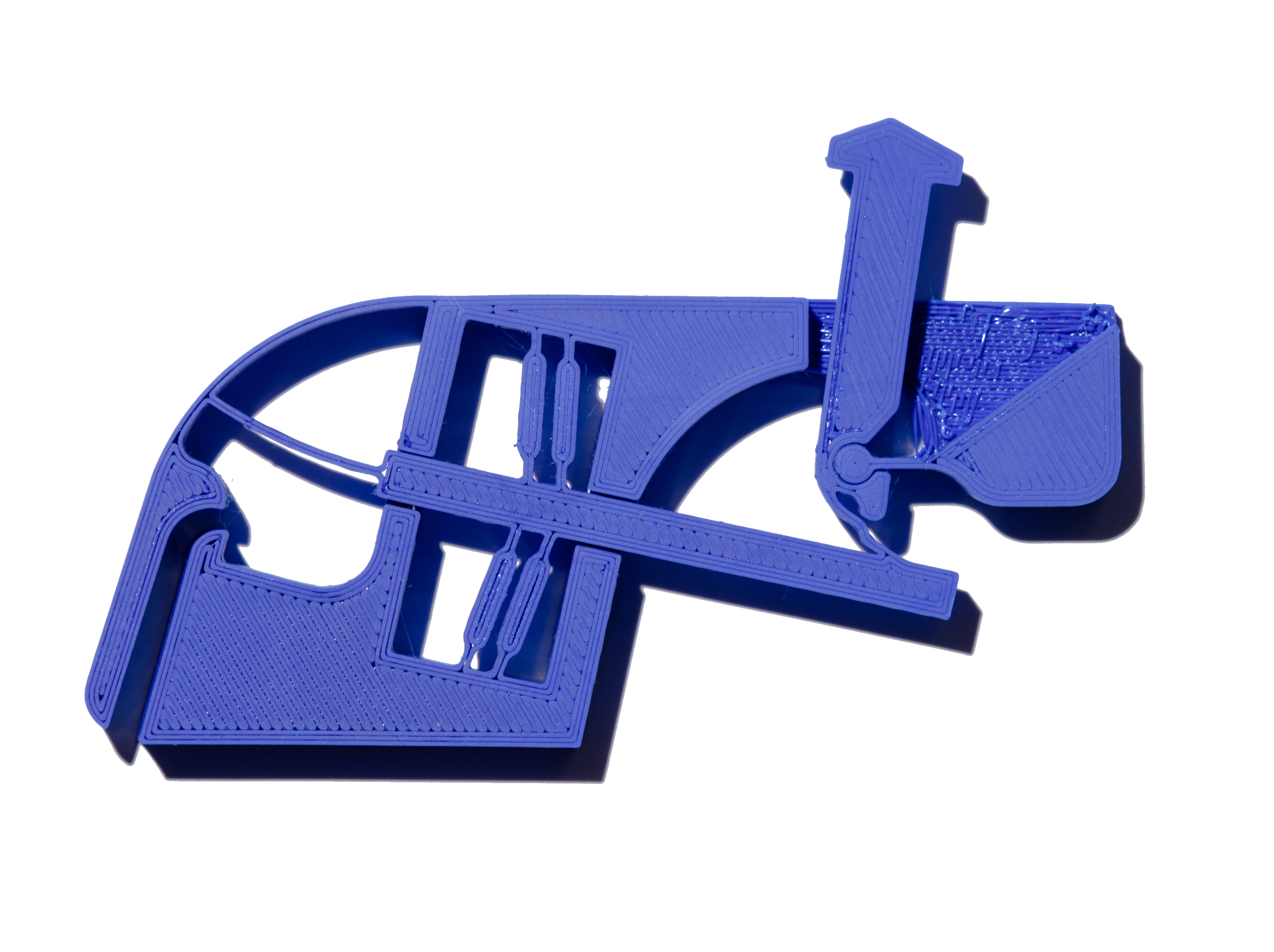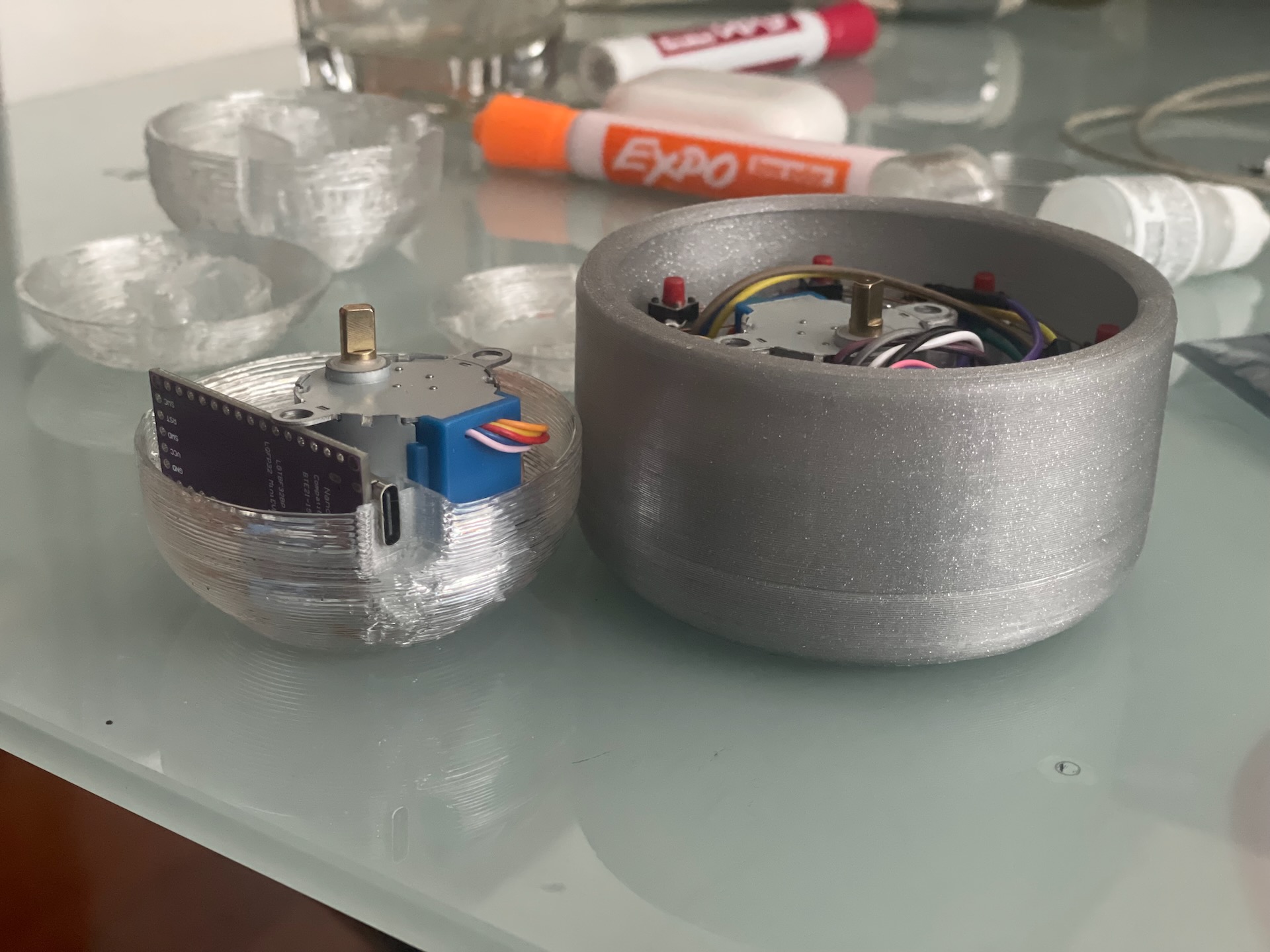Dear Juha Koivisto,
My name is David Ramírez Corredor. We met during your PDP sponsor meeting about the 4D-foams project. I'm very interested in your work and would love to explore potential collaboration opportunities with you outside of PDP, as my team ultimately chose another project.
I am a Design and Mechanical Engineering student from Universidad de Los Andes (Colombia), doing exchange studies at Aalto for my final semester. I have a huge passion for technology and human-centered solutions. I have experience working on bio-inspired designs, compliant mechanisms, and soft robotics using off-the-shelf materials. I want to contribute my background to your projects and learn from your expertise in materials engineering, an area I have yet to explore in depth. Your approach to shape-changing materials and structures presents a unique opportunity to take my work in new and innovative directions.
I am especially interested in learning from you and contributing to your projects in any capacity you see fit. Whether directly through Aalto or via the organizations I am part of (Universidad de los Andes and BioDis), I am confident that we could find a mutually beneficial collaboration. I am open to discussing the location and timeline that work best for you, and I could work from either Helsinki or Colombia starting in December, depending on your preferences.
I have attached a copy of my CV for you to look over, and I would love to discuss any potential collaboration in further detail. Thank you for considering my request, and I hope to hear from you soon.
Best regards,
David Ramírez Corredor
Design and Mechanical Engineering student
As a Product Designer and Mechanical Engineer, I integrate interdisciplinary STEM research with engineering precision and design intuition to create nature-inspired, sustainable solutions. My expertise in rigid, hyperelastic, laminar, and natural materials—including metals, polymers, leather and sustainable alternatives—allows me to engineer products that push material and structural boundaries. I thrive in multidisciplinary teams, leveraging biomimicry, generative design, and advanced manufacturing to develop functional, scalable, and environmentally responsible products that redefine user experiences.
I design products by balancing imagination, engineering precision, and business viability. My approach ensures that projects are not only creatively unrestricted but also technically and commercially feasible from the start. This process has enabled me to develop innovative consumer products, biomimetic packaging, and robotic soft goods solutions that integrate sustainability and user experience seamlessly.
Unlike traditional linear approaches, my process is adaptive—it doesn’t assume that every project follows the same path. Instead of refining all aspects at once, I prioritize solving the biggest uncertainty first—whether it’s technical feasibility, user experience, or scalability
Every project follows these five integrated stages:
This framework allows me to de-risk projects early, prevent wasted effort on unnecessary refinements, and ensure that every design decision contributes to both functionality and market success. It has been applied across physical products, digital experiences, and research-driven projects, ensuring adaptability across disciplines.
Engineered a soft robotics-based mannequin capable of adapting to diverse body types through controlled material deformation. This project integrates advanced kinematic design, material behavior simulation, and robotic actuation to create a dynamic mannequin that mirrors real human proportions for inclusivity in retail displays.
Designed as an inclusive, shape-shifting retail mannequin, Forma adapts to real human body proportions, offering a more personalized shopping experience. By leveraging soft robotics, it enhances consumer interaction, redefines inclusivity, and reshapes brand perception in fashion retail through accurate representations of diverse body types.
Forma minimizes return rates in online and physical retail by providing accurate fit visualization. This innovation aligns with consumer demand for body diversity representation, making it a compelling solution for sustainable retail strategies and enhanced customer engagement.
Developed an innovative shape-shifting retail mannequin using soft robotics technology. Designed and simulated the kinematic structure to accurately represent various body types. Successfully manufactured prototype molds for the mannequin's body parts.
Dove deep into simulation in SOFA, oversaw the simulation in Fusion, and participated in the iterative design phase. Actively participated in the manufacturing of the robot.
Guided the team across the challenges in the project, and actively participated in the manufacturing process and report writing.
Fashion retail heavily relies on standardized mannequin sizes, which fail to represent the diversity of body typesamong customers. Studies indicate that inaccurate size representation leads to dissatisfaction and high return ratesin online shopping. This project was conceived to create a dynamically adjustable mannequin, addressing inclusivity gaps and enhancing customer engagement in both physical and digital retail.
The project explored soft robotics principles applied to wearable technology and prosthetics. Research indicated that silicone-based structures with pneumatic actuation could enable gradual, naturalistic deformation. A feasibility study identified core deformation axes, ensuring that shape adjustments accurately reflected real human musculature without material failure.
A key challenge was designing a material and actuation system that could support large, repeated deformations without tearing or excessive strain. Early prototypes revealed that thin-walled silicone molds tore easily, prompting iterations in mold design. The team experimented with Single-pour molds (unsuccessful due to air trapping and weak seams), Two-part segmented molds (improved structure but complex to assemble) and Rotomolding techniques (showed potential but required specialized machinery). Final refinements led to a partitioned casting approach that balanced ease of manufacturing with structural integrity.

The initial silicone cast prototypes were tested for: Shape accuracy (Comparing FEM-simulated deformation vs. real-world behavior), Durability (Evaluating elasticity, air retention, and structural fatigue over repeated cycles), and User Interaction (Conducting preliminary studies on how shoppers perceive and engage with the adaptive mannequin). Results showed that while the mechanism worked, response time needed improvement, leading to ongoing refinements in the control panel and pneumatic system.
The latest prototype integrates a refined pneumatic system for smoother transformations. Planned refinements include optimized silicone layering to enhance durability and visual realism, retail showroom trials to assess market reception and commercial interest and exploring broader applications beyond retail, such as adaptive prosthetics, gym mannequins, and ergonomic studies.
This project explores the integration of compliant mechanisms in product design, specifically in a detachable-handle cooking pan. By leveraging elastic deformation, the handle eliminates traditional hinges, springs, and locking pins, reducing part count while improving reliability and manufacturability. Additive manufacturing was used to prototype various morphologies, validating the structural integrity and mechanical performance of the final bistable gripping mechanism. The result is a lightweight, single-part handle with a secure grip, that targets compact living environments, such as tiny homes, RVs, and co-living spaces,
This handle’s user-centered design emphasizes ergonomics, safety, and intuitive interaction. The mechanism ensures one-handed operation, with an auto-locking feature for security and an optimized opening trigger for easy release. The rim-gripping interface prevents slippage, while the minimalist aesthetic aligns with modern CMF (Color, Material, Finish) trends in cookware. The product combines a glossy enamel pan with a matte pastel-orange handle, creating a cohesive, visually distinct look.
The detachable-handle pan targets compact living environments, such as tiny homes, RVs, and co-living spaces, where space-saving solutions are in high demand. The global cookware market, valued at $23.73 billion in 2021 and growing at a CAGR of 7.2%, presents significant opportunities for innovation. Unlike existing solutions, this design eliminates assembly complexity, offering a cost-effective, durable alternative to competing products like Tefal Ingenio and Carote.
Carried the whole project
Provided guidance and expertise in traditional mechanisms, while also graded the project and written report.
A systematic product selection process evaluated multiple household items based on relevance, mechanical feasibility, and compliance benefits. The detachable-handle pan emerged as the best candidate, given its ergonomic advantages, space-saving benefits, and potential for market adoption. The opportunity was clear: design a single-part compliant mechanism that eliminates traditional locking components while improving reliability and user experience.
We began analyzing compliant mechanisms in consumer products. A benchmarking study of detachable-handle pans identified common failure points in existing solutions, such as handle melting, grip slippage, and mechanical failure due to fatigue. Early prototypes tested various gripping and locking morphologies, refining the interaction mechanism and material properties.
The biggest challenge was designing a compliant gripping mechanism that could securely hold the pan while being easy to operate. A bistable bending arm mechanism was developed to auto-lock and release with minimal user effort. Prototyping iterations addressed grip strength, ease of use, and resistance to creep deformation under repeated loading conditions.

Multiple prototypes were 3D printed in PolyMide CoPA (a nylon-based polymer) to test flexural strength, heat resistance, and durability. Experimental tensile and flexural tests were conducted per ASTM standards, evaluating the effect of moisture absorption and heat treatment on mechanical properties. The results indicated that the material couldn't reach the required stiffness for this application, and thus, the iterative refinement was done with PLA prototypes.
The final prototype features a rim-gripping compliant jaw system, optimized for ergonomic operation and safety. User testing validated one-handed operation, comfortable grip force, and intuitive interaction. The handle’s monochromatic CMF palette enhances safety by visually distinguishing it from the pan. Final refinements focus on ergonomics and reducing fatigue.
Engineered a reusable paper-based shipping wrap with a biomimetic folding structure inspired by ferns, with increased impact resistance, adaptability, and material efficiency for protective e-commerce packaging.
Designed an adaptable packaging system inspired by the self-coiling behavior of ferns, balancing structural integrity, sustainability, and ease of use for a seamless unboxing experience.
Developed a sustainable alternative to bubble wrap, reducing single-use plastics in e-commerce while offering a reusable, space-saving, and cost-effective protective packaging solution.
Plastic-based protective packaging dominates e-commerce, contributing to massive waste. LeafLock was conceived as a paper-based alternative offering protection, reusability, and compact storage without synthetic materials.
Field studies in three ecosystems led to the selection of Dryopteris Wallichiana, a fern known for its circinate (spiral) unfurling. This movement inspired LeafLock’s self-tightening wrapping mechanism, mimicking nature’s adaptive protection strategies.
The fern’s spiral growth, origami-like folds, and adaptive structure were applied to develop a self-gripping, impact-resistant wrapper. Early CAD simulations and folded paper models refined the form, optimizing material use and performance.

Prototypes underwent compression, shock absorption, and reusability tests, ensuring protection comparable to bubble wrap. The compact, foldable design proved easy to store and apply, making it an accessible alternative for e-commerce brands.
The final version integrates a refined folding structure and recyclable materials. The next phase involves real-world shipping trials and scaling production for commercial use.
Engineered a transparent digital compass with a stepper motor and magnetometer, integrating precise directional recalibration while balancing structural clarity and electromagnetic interference mitigation.
Designed a transparent compass that reveals its internal mechanics, blending aesthetic appeal with intuitive interaction to create an immersive, curiosity-driven navigation experience.
Developed an adventure-driven compass that transforms routine exploration by guiding users to random destinations, enhancing spontaneous discovery in urban and natural environments.
Project conceptualization, protoyping with Arduino, mechanical design, CMF design for manufacturability.
Traditional compasses focus on accuracy, but Let’s Get Lost redefines navigation as an adventure generator. Research on urban exploration habits showed that users often stick to routine paths, missing opportunities for discovery. Instead of prioritizing precision, the project introduced randomized directionality and transparent mechanics, creating an interactive and curiosity-driven experience.
Early explorations tested various casing designs, actuation methods, and interaction mechanics to balance engagement and durability. The final concept centered around a press-activated recalibration function, with a transparent case that enhances both aesthetics and educational value. Material studies ensured optical clarity without compromising strength.
The biggest technical hurdle was preventing electromagnetic interference from the stepper motor, which disrupted magnetometer accuracy. To counter this, the motor was programmed to shut off during recalibration, while metal shielding was introduced to stabilize directional readings.

Prototyping iterations refined casing clarity, shielding, and button feedback. Initial prints had optical distortions and weak structural integrity, leading to wall thickness adjustments and extrusion layering refinements. Silicone buttons were fine-tuned for better tactile response and durability while maintaining airtight sealing.
Final refinements optimized actuation timing, improved material stress distribution, and enhanced usability. User testing led to button pressure adjustments for better interaction, and exhibition at Andando 2024 confirmed its appeal as an interactive, curiosity-driven product. Next steps include further ergonomic tuning and market positioning in adventure tourism and education.